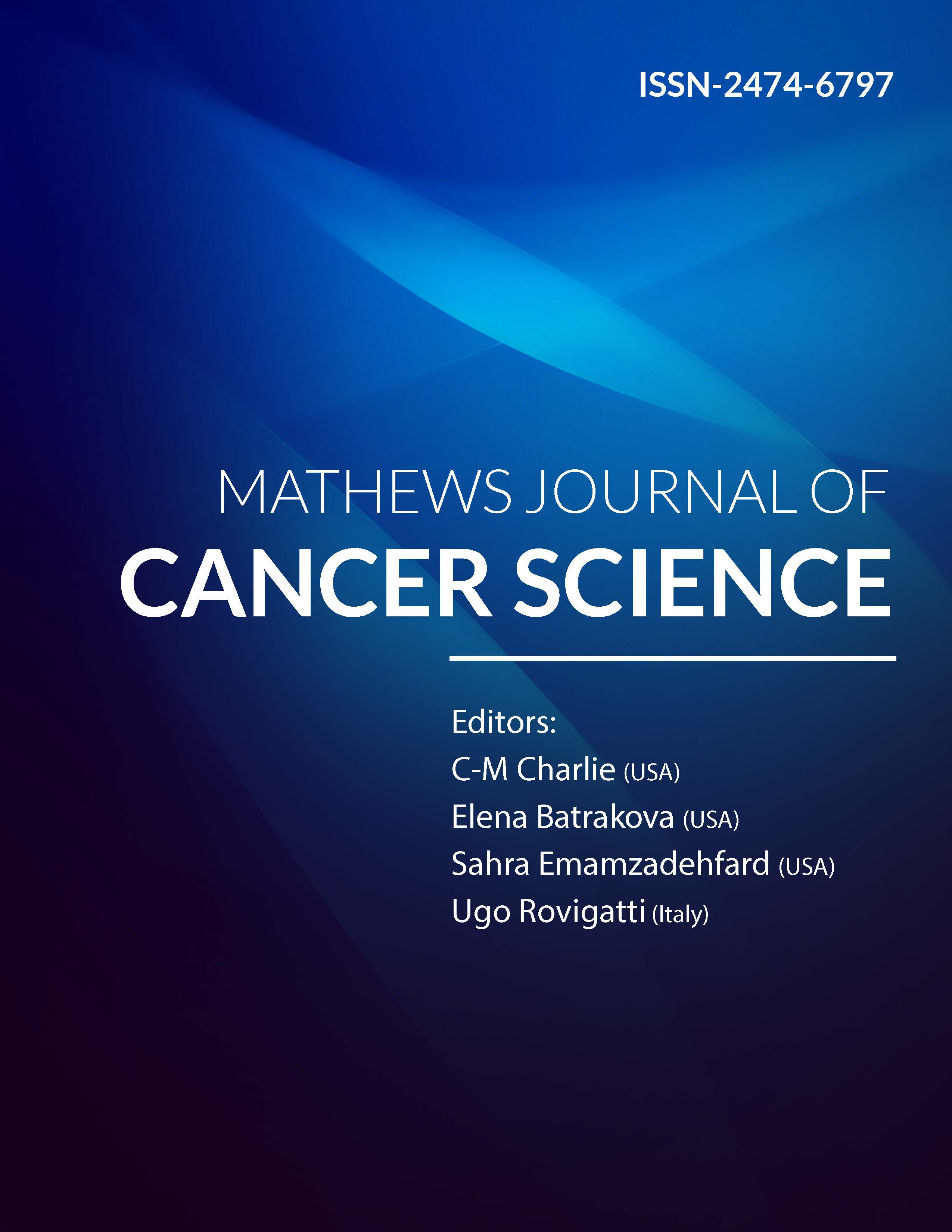
Information Links
Previous Issues Volume 2, Issue 1 - 2017
Flow Cytometric Analysis of Hyperfractionated and Hypofractionated Radiotherapy for Breast Cancer Patients
Hossam Donya1, 2*, Mahmoud Moawad3
1Medical Physics Division, Physics Department, Faculty of Science, King Abdulaziz University, Jeddah 21589, Saudi Arabia.
2Physics Department, Faculty of Science, Menoufia University, Shebin El-Koom 32512, Egypt.
3Department of Surgical Pathology, National Cancer Institute (NCI), Cairo University, Egypt.
Corresponding Author:Hossam Donya, Medical Physics Division, Physics Department, King Abdulaziz University, Jeddah 21589, Saudi Arabia and Physics Department, Faculty of Science, Menoufia University, Shebin El-Koom 32512, Egypt, Tel: +201004164148; E-Mail: [email protected]
Received Date: 19 Dec 2016
Accepted Date: 26 Jan 2017
Published Date: 27 Jan 2017
Copyright © 2017 Donya H
Citation: Donya H and Moawad M. (2017). Flow Cytometric Analysis of Hyperfractionated and Hypofractionated Radiotherapy for Breast Cancer Patients. Mathews J Cancer Sci. 2(1): 010.
ABSTRACT
Our study is considered a continuing effort in radiation therapy treatment of breast cancer. It is concerned a comparison study between the effect of hyperfractionation radiotherapy (a short term course) and hypofractionation radiotherapy (a long term course) of treatment photon doses on breast cancer cells. The comparison is done with refereeing to normal breast tissue measurements using flow cytometric analysis of DNA ploidy studies. Our samples are extracted from normal benign tumors (non-irradiated) and cancer cells in patients pre-irradiated to VARIAN LINAC of 6 MV photon energy at Radiology Department, NCI. S-phase is extracted from flow cytometric analysis that presents a sophisticated comprehension on the rate of growth of breast tumor cells. It is showed a low S-phase fraction less than 7 % in hyperfractionation radiotherapy, however in hypofractionation radiotherapy showed a high S-phase fraction great than 10%. Accordingly, our study reveals the importance of hyperfractionation radiotherapy for breast cancer treatment, its capabilities to kill larger DNA of tumor cells and restrict its populations.
KEYWORDS
Hyperfractionation Radiotherapy; Hypofractionation Radiotherapy; Flow Cytometric Analysis; S-phase Fraction.
ABBREVIATIONS
HFRT: Hyperfractionation Radiotherapy; HRT: Hypofractionation Radiotherapy; RT: Radiation Therapy; IMRT: Intensity-Modulated RT; LINAC: Linear Accelerator; Flow cytometric: (FCM); SPF: S-phase Fraction; FFPE: Formalin Fixed Paraffin Embedded; PI: Propidium Iodide; DI: DNA index; NCI: National Cancer Institute; HDRBT: High Dose Rate Brachytherapy